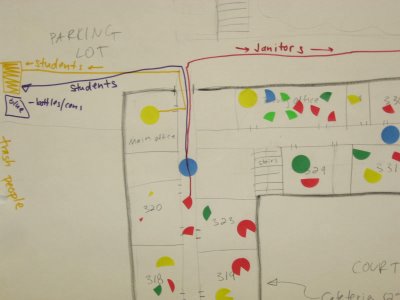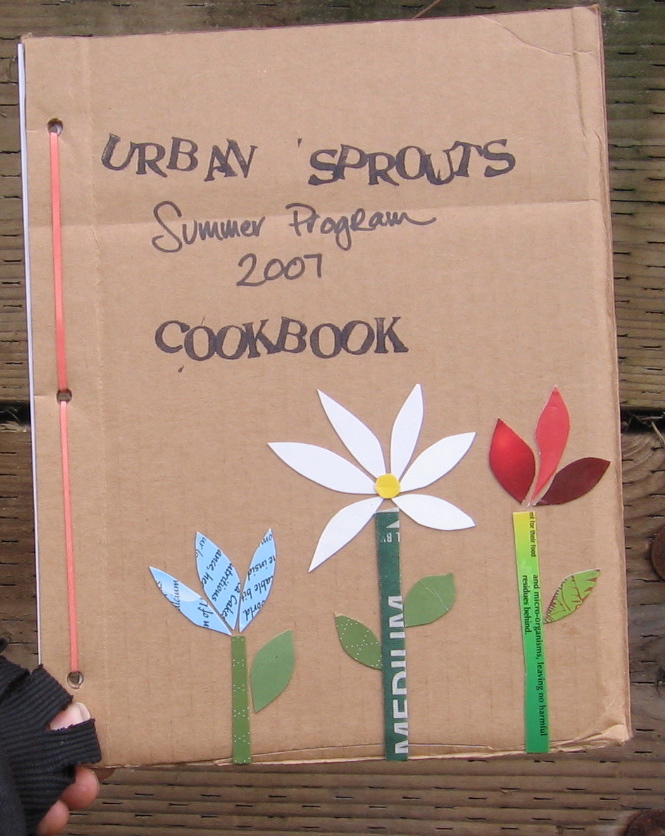 Tuesday was our practice Salad Day at Burbank M.S. For this round we did minimal school publicity, just a handful of posters made by Mr. Perez’s students and hung up around school by Ms. Keenan’s students. Perez’s and DeSnoo’s 2nd period groups, and Keenan’s 4th period class harvested all the lettuce heads and as much loose salad mix as they could, washed it, dried it in the salad spinner, checked through all the leaves and removed any yucky stuff, and presented beautiful, fresh, organic, garden-grown salad during lunch period. We set up a table in the cafeteria, with tablecloths and crepe paper decorations, and a handful of students sat at the table helping to serve the salad and eating it. Lori and I passed out salads to students sitting at tables throughout the cafeteria, and our table was swarmed with students and teachers coming to eat their salad. Many came back for seconds and thirds! Teachers even took home a few plastic baggies of the leftovers. Lunch groups, like Ms. Valdez’s girls group, took enough for their members. The students and teachers ate ALL the salad we had harvested. We had two huge silver bowls of salad—I’d estimate 6-8 lbs at least.
Tuesday was our practice Salad Day at Burbank M.S. For this round we did minimal school publicity, just a handful of posters made by Mr. Perez’s students and hung up around school by Ms. Keenan’s students. Perez’s and DeSnoo’s 2nd period groups, and Keenan’s 4th period class harvested all the lettuce heads and as much loose salad mix as they could, washed it, dried it in the salad spinner, checked through all the leaves and removed any yucky stuff, and presented beautiful, fresh, organic, garden-grown salad during lunch period. We set up a table in the cafeteria, with tablecloths and crepe paper decorations, and a handful of students sat at the table helping to serve the salad and eating it. Lori and I passed out salads to students sitting at tables throughout the cafeteria, and our table was swarmed with students and teachers coming to eat their salad. Many came back for seconds and thirds! Teachers even took home a few plastic baggies of the leftovers. Lunch groups, like Ms. Valdez’s girls group, took enough for their members. The students and teachers ate ALL the salad we had harvested. We had two huge silver bowls of salad—I’d estimate 6-8 lbs at least. Dr. Ignacio (School Assistant Principal) came by during lunch and said to me, “Never, not once in my entire career as an educator has this happened before, but this year three times students have seen me eating my apple and have asked for some fruit to eat.” For the first time ever for many students, that apple for the teacher has a new meaning.
Dr. Ignacio (School Assistant Principal) came by during lunch and said to me, “Never, not once in my entire career as an educator has this happened before, but this year three times students have seen me eating my apple and have asked for some fruit to eat.” For the first time ever for many students, that apple for the teacher has a new meaning.school garden
school lunch
salad
organic













